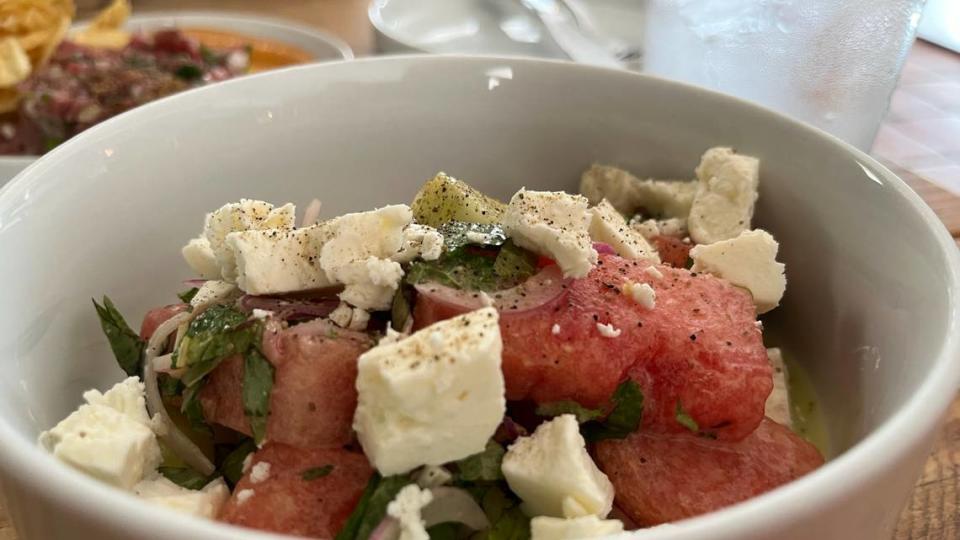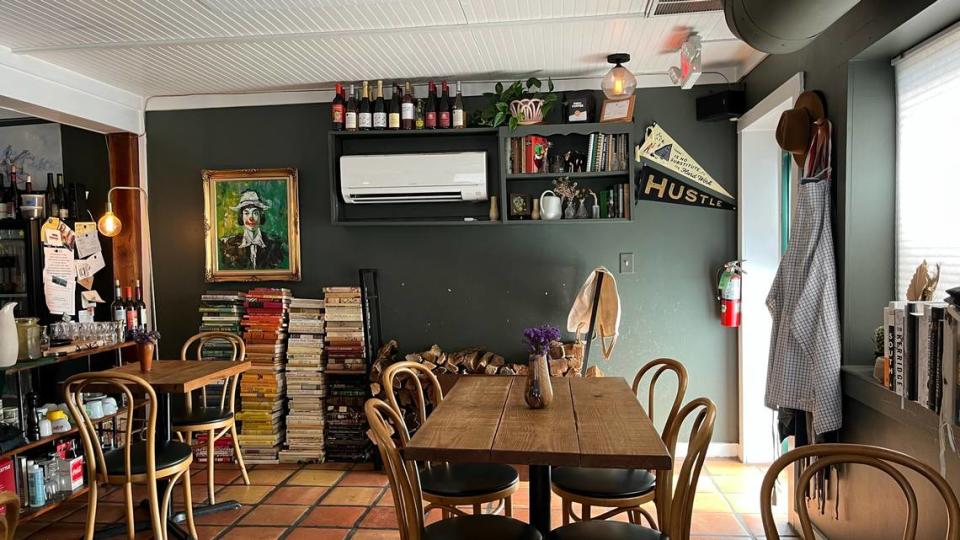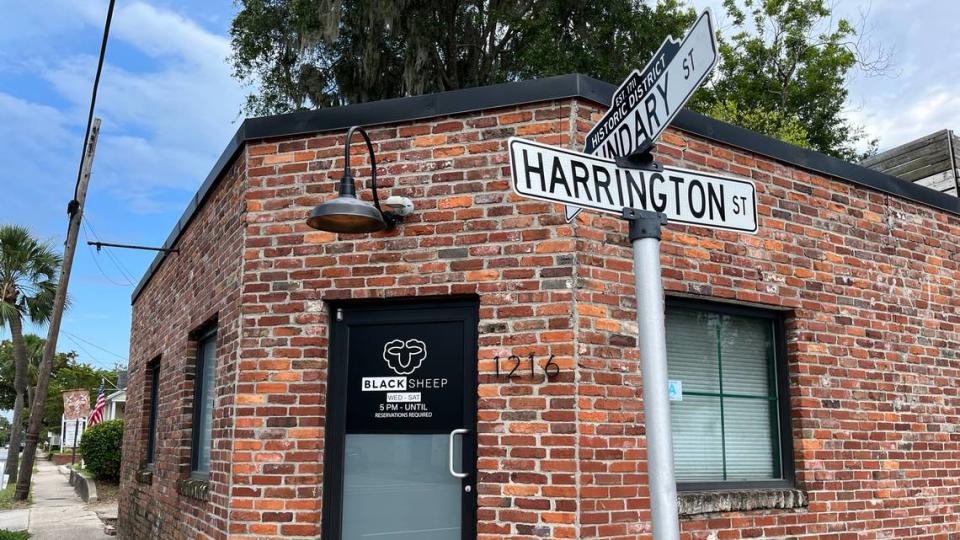‘A restaurant for everybody’: Southern food writer reviews this SC gem and finds something special
I wanted to review Blacksheep in Beaufort because I’d heard it was special.
I’m not the only one who’s heard as much since the 27-seat restaurant first opened in May 2020, just days after South Carolina Gov. Henry McMaster OK’d the resumption of indoor dining.
When chef-owner Matt Wallace and general manager Krista Duffy — who together are the whole of Blacksheep’s staff — release available reservations, every table is typically claimed within minutes. (Reservations used to go live at midnight until Duffy learned that residents of Beaufort, where 28 percent of the population has reached retirement age, were staying up well past their bedtimes to click the link.) Customers then get back online after their coveted meals to rave about flavors that reduced them to tears, stoking the scarcity cycle.
So, when I scored a reservation, I put on a nice dress and blocked out three hours on my calendar, which I figured was the right amount of time for a multicourse prix-fixe menu.
In short, I did the one thing that Wallace doesn’t want his guests to do, other than arrive with children or previously undisclosed allergies.
“I am terrified that people are going to think that it’s pretentious cheffy food, and they’ll have to eat at Wendy’s on the way home,” he told me by phone after my visit. “I set out to make a restaurant for everybody.”
Based on my experience there, Wallace has achieved his objective.
Blacksheep is the quintessential neighborhood restaurant, with little handwritten signs explaining infrastructure quirks and an empathetic GM who knows her regulars well enough to override listed wine pairings that wouldn’t jibe with their palates. Its dishes, portioned out generously to ward off accusations of snobbery, reflect Wallace’s galvanizing interests in Southern produce and Subcontinental seasoning — but are constructed so an eater who isn’t well versed in either can enjoy the sweet heat of a vinaigrette lacing chunks of ripe watermelon. (Also of note: Dinner was done about one hour after it started.)

The restaurant’s casual-yet-purposeful vibe may feel familiar to you from another place or time. Perhaps you once dropped by a little family-owned tavern on the Portuguese coast or remember a whole grain bakery that a couple of ski instructors opened in the off season. Which is to say: Blacksheep is charming and memorable, but its specialness is closer in spirit to an old BMW 2002 than a late-model Ferrari.
Somehow, though, the restaurant has been tagged with a sui generis designation, which isn’t necessarily a good thing from Wallace’s perspective. He suspects guests wouldn’t have been so quick to conflate his high standards with fine dining had pandemic restrictions not forced him to modify his initial vision of a “little more rock-and-roll” no-reservations restaurants where strangers would share tables and plates.
“It seems like as we become more well known, we have these box checkers who just come here because they feel pressured to, but don’t do any research,” says Wallace, who at 27 left the healthcare industry to work in restaurants around his native Atlanta, including Kevin Gillespie’s Woodfire Grill. “We’ve noticed in the last few weeks an increase in the number of people who’ve just shown up and announced they’re allergic to garlic.”
With only two choices for each of the three courses on the $50 menu, which Wallace rewrites on a weekly basis, those surprise aversions can wreck the evening for a guest and the chef.
“This is a very tough thing,” Wallace solemnly told a guest at a table next to mine after he revealed an onion allergy. “If I had known even yesterday…” he sighed as he returned to the open kitchen, where he cooks in a woodfired oven left behind by a previous tenant.

Aside from those consequences of an elite reputation, I was curious why diners would size up a lovely local restaurant where the chef’s whims determine the menu and conclude it could never be replicated. What is it about Blacksheep’s policy of giving everyone an equal shot at booking a bare table set with bistro chairs that strikes contemporary diners as exceptionally unique?
The answer is depressingly obvious.
“People focus on profits,” says Wallace, who set his sights on a decent living when he bought the squat brick building that houses Blacksheep. “Small restaurants don’t generate millions of dollars, and that tends to be the marker of our success. We need to encourage chefs to have a voice and stick by that voice: We listen too much to guests who want cheeseburgers.”
But that scenario presumes chefs are opening restaurants in the first place. In fact, as food-and-beverage has become bigger business, there’s less financial incentive for talented chefs to go out on their own. While many executive chefs at the height of the pandemic dreamed of opening places like Blacksheep, most of them ultimately didn’t want to trade benefit packages and six-figure salaries for the headaches of a solo operation.
Informed restaurant goers by now understand that hourly-wage restaurant workers are chronically and shamefully underpaid. They appreciate that their restaurant outings are more frequently disappointing these days because potential cooks and servers are being asked to cover their basic expenses with less than $30,000 a year.
What’s rarely discussed is what’s happening on the other end of the pay spectrum and how it’s shaping restaurant experiences.
The restaurant industry isn’t immune from the disparity in wage growth that’s been a feature of the American economy for decades: While head chefs 20 years ago earned 58 percent more than cooks, they now collect twice as much money as their colleagues on the line. According to the Bureau of Labor Statistics, the top 10 percent of chefs and head cooks — who are arguably best situated to consider a shift to entrepreneurship — make $84,570 on average.
By corporate standards, that’s not a staggering sum. But for someone who entered the trade at $7.25 an hour, it could be reason enough to stay on the payroll.
Chefs surely deserve the salaries they’re getting: Restaurant work is punishing, even if you spend most of your shift checking inventory and writing schedules. But it increasingly seems like eaters are the poorer for it.

Or to put it another way: Money can solve problems, but at least for diners yearning for creativity and artistic integrity, it can also breed them.
A prime example of cash holding back culinary culture is Mount Royal, Hugh Acheson’s much-anticipated Montreal-style steakhouse at a Hyatt hotel in Atlanta’s Buckhead neighborhood.
Acheson departed the restaurant four months after its opening; celebrated local baker Chris Wilkins had already stepped away from it. While people involved in the project declined to comment, citing legal considerations, it appears the hotel brass and kitchen team’s competing priorities led to the collapse of what looked on paper like a great idea.
It’s tempting to imagine how tourtières and sour pickles might have fared if the literal stakes were lower.

“I opened this on a shoestring budget,” Wallace says of Blacksheep. “Great finishes in the bathroom don’t make you money. People who come into restaurants aren’t eating the $70 clay plates.”
At Blacksheep, they’re instead eating a wedge of pork belly smoked in the parking lot out back, with staunchly acidic pickled peaches to offset its fat and boiled peanuts to pin the dish to the Lowcountry map.
Right now, that is pretty special.
This story first appeared in The Food Section, a Charleston-based newsletter covering food and drink across the American South. To learn more about the James Beard Award-winning publication, visit thefoodsection.substack.com.

